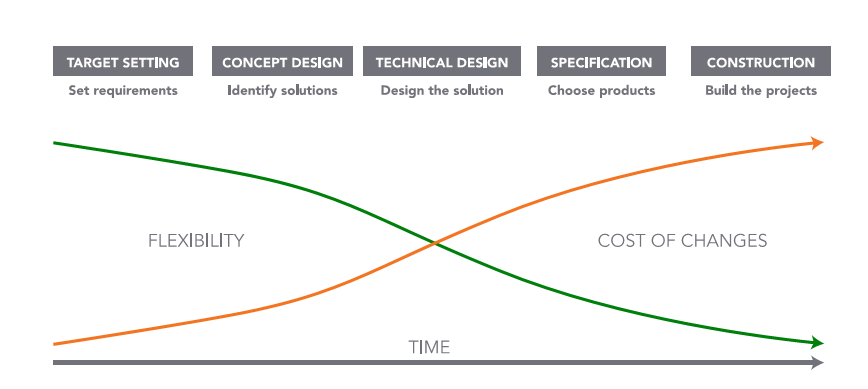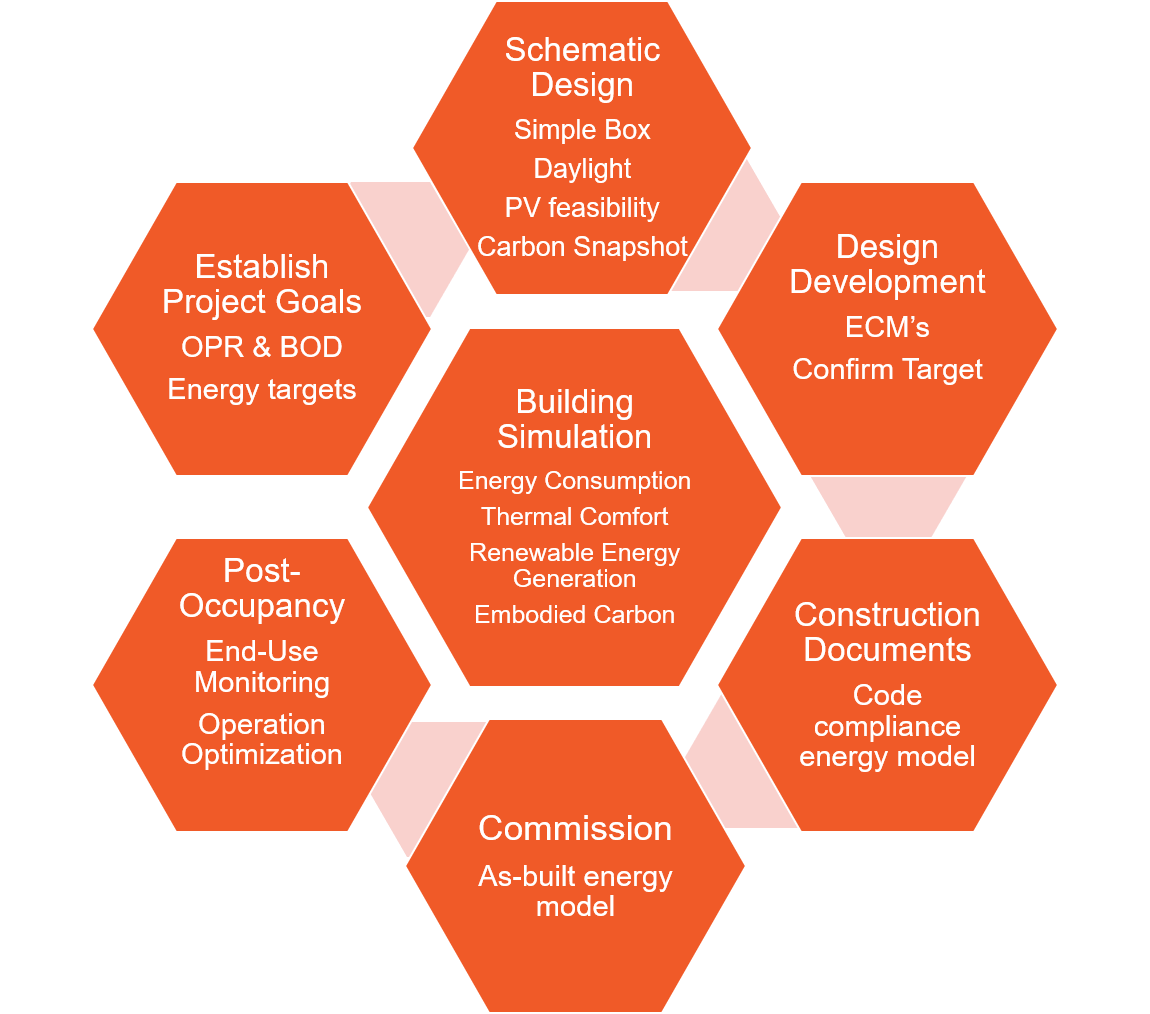

Blog
Before you can really dig deep into the advanced design concepts of embodied carbon analysis and whole building energy modeling, you must first perform some bare minimum prep work.

Before you can really dig deep into the advanced design concepts of embodied carbon analysis and whole building energy modeling, you must first perform some bare minimum prep work. An easy way to get the pre-schematic plan up on its legs quickly is to add qualitative performance measures to the architect’s program study or create an Owners Project Requirements (OPR) document. For this article, “qualitative performance measures” refer to the metrics that express embodied carbon, but can also include operational energy, water, and even healthy materials.

An integrated design process (IDP) anchors the architectural program to performance metrics such as carbon dioxide equivalents (CO2e), Energy Use Intensity (EUI), and zero Energy Performance Index (zEPI). So, by completing the IDP, you’re getting the basic tools to optimize embodied carbon and operational energy use in your design:
Environmental Product Declarations
Hotspot Carbon Analysis
Life Cycle Analysis (LCA)
LEEDv4.1 introduces several changes that make materials credits more accessible for projects. Also, for the first time, the Minimum and Optimize Energy Performance credits are weighed by both cost and greenhouse gas emissions.
International Living Future Institute (ILFI) and Passive House Institute announced a new Crosswalk to support certification under both Living Building Challenge and Passive House programs highlighting principal requirements and underscores elements that need factoring early (psst sound familiar?)
NYC’s Building Emissions Law passed by the New York City Council on April 18, and is the most ambitious building emissions legislation enacted by any city in the world. The new law places buildings on a path to meet the city’s goal to reduce overall carbon emissions 80% by 2050. Buildings represent nearly 70% of those emissions.
Target the early phase of the project because low-carbon design practices, especially when looking at embodied carbon, are the most efficient (as well as cost-effective) in the early phases of a project. Steven Winter Associates, Inc. (SWA) supports early design analysis, goal setting, and comprehensive building pathways to achieve all your building performance goals.

Contributor: Kai Starn, Senior Sustainability Consultant
Steven Winter Associates